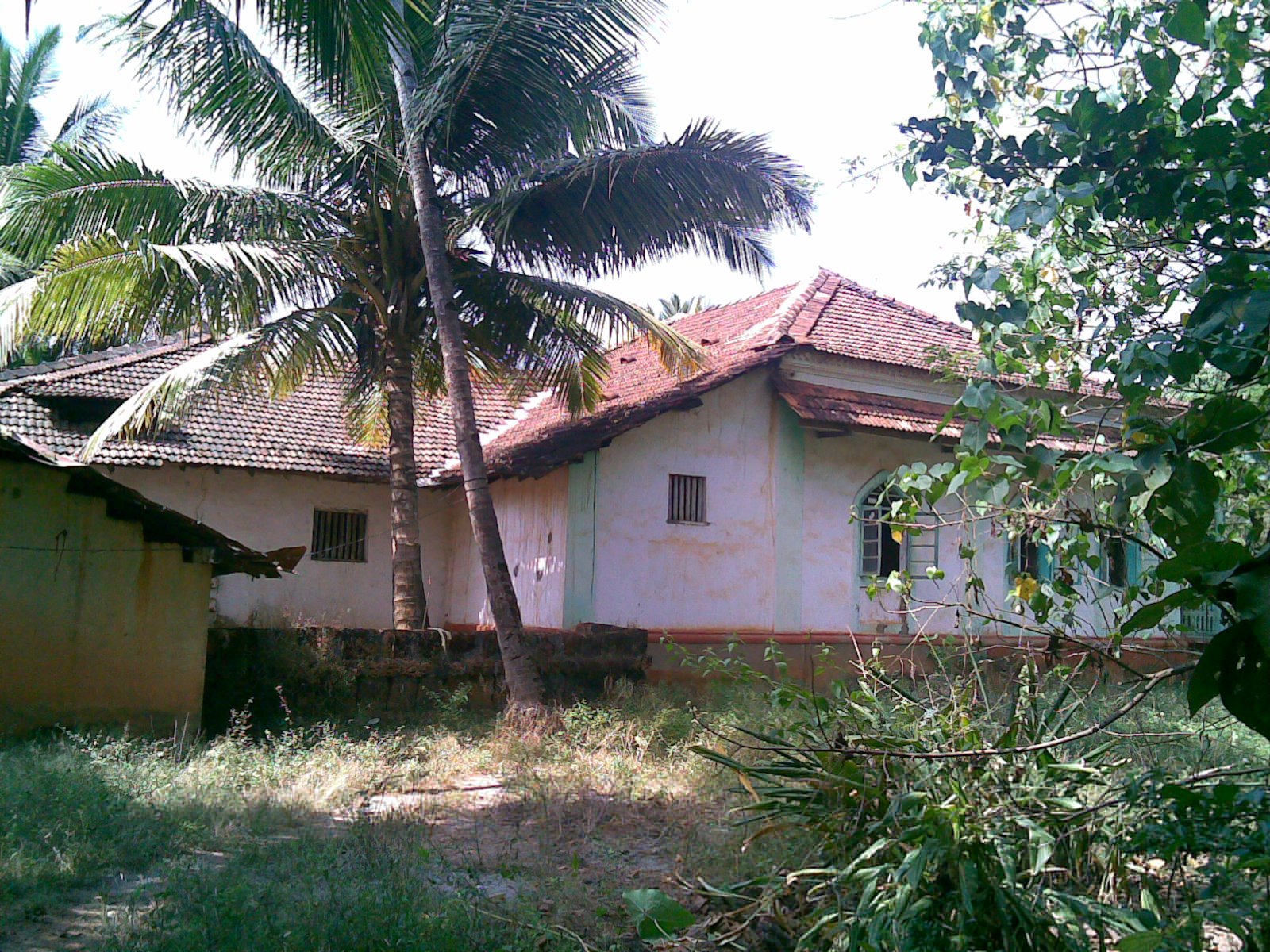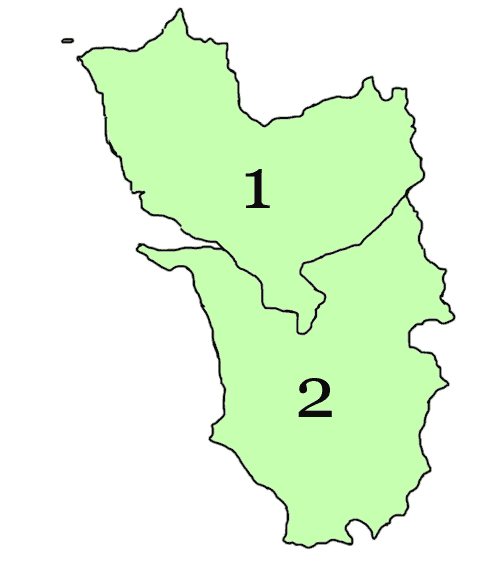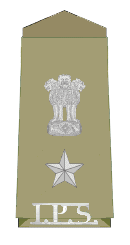|
South Goa District
South Goa district is one of two districts that comprises the state of Goa, India, within the region known as the Konkan. It is bounded by North Goa district to the north, the Uttara Kannada district of Karnataka state to the east and south, while the Arabian Sea forms its western coast. History The Portuguese established a colony in Goa in 1510 and expanded the colony to its present boundaries during the 17th and 18th centuries. Goa was annexed by India on 19 December 1961. Goa and two other former Portuguese enclaves became the union territory of Goa, Daman and Diu, and Goa was organised into a single district in 1965. On 30 May 1987 Goa attained statehood (while Daman and Diu became a separate union territory), and Goa was reorganised into two districts, North Goa and South Goa. Administration Ruchika Katyal, an officer of the Indian Administrative Service, is the collector and district magistrate of South Goa. There are deputy collectors and ''mamlatdars'' for each sub Divis ... [...More Info...] [...Related Items...] OR: [Wikipedia] [Google] [Baidu] |
Sanguem Taluk
Sanguem Sub-District is an administrative region of Goa, India. Settlements Many of the Villages mentioned below were ceded to the Darbandora taluk, Dharbandora Sub-Division. Cities Sanguem has 1 City: Sanguem, Sanguem City Towns Sanguem has 1 Town: Sanvordem Villages Sanguem has 45 Villages: Aglote, Bandoli, Bati, Sanguem, Bati, Calem, Camarconda, Caranzol, Codli, Colem, Colomba, Comproi, Coranginim, Cormonem, Costi, Sanguem, Costi, Cotarli, Cumbari, Curdi, Curpem, Darbandora, Dharbandora, Dongor, Dudal, Maulinguem, Moissal, Molem, Muguli, Naiquinim, Netorli, Nundem, Patiem, Piliem, Porteem, Potrem, Rivona, Rumbrem, Sancordem, Sangod, Santona, Sigao, Sonauli, Surla, Tudou, Uguem, Verlem, Vichundrem, Viliena, Xelpem References External linksCities and villages in Sanguem Taluk http://www.census2011.co.in/data/subdistrict/5618-sanguem-south-goa-goa.html Taluks of Goa Geography of South Goa district {{goa-geo-stub ... [...More Info...] [...Related Items...] OR: [Wikipedia] [Google] [Baidu] |
Salcete
Salcete ( Konkani: ''Saxtti''/''Xaxtti''; pt, Salcette) is a sub-division of the district of South Goa, in the state of Goa, situated by the west coast of India. The Sal river and its backwaters dominate the landscape of Salcete. Historically, the sixty-six settlements south of the River Zuari formed the original Salcette territory. Salcete forms a part of the bigger Konkan region that stretches along the western shoreline of peninsular India. In erstwhile Portuguese Goa, the Salcette ''concelho'' (county) located in the ''Velhas Conquistas'' (Old Conquests) was co-terminous with the undivided Salcette territory (Salcete and Mormugaõ ''talukas''). In 1917, the ''concelho'' was bifurcated into the present-day ''talukas'' of Mormugao and Salcette. The contemporary Salcete ''taluka'' has been classified as a rurban area. Margao serves as the administrative headquarters of both Salcete ''taluka'' and the South Goa district. Etymology "Salcete" is the modern angli ... [...More Info...] [...Related Items...] OR: [Wikipedia] [Google] [Baidu] |
Quepem Taluk
Quepem is a sub-division of South Goa district in the state of Goa, India. It is an administrative region of Goa, India. Settlements Cities Quepem has 2 cities: Curchorem-Cacora, Quepem Towns Quepem has 1 town: Xeldem Villages Quepem has 35 villages: Adnem, Ambaulim, Assolda, Avedem, Bali, Barcem, Bendordem, Cavorem, Cazur, Chaifi, Cordem, Corla, Cotombi, Fatorpa, Gocoldem, Maina, Mangal, Molcarnem, Molcopona, Morpila, Nagvem, Naquerim, Odar, Padi, Pirla, Quedem, Quisconda, Quitol, Sirvoi, Sulcorna, Tiloi, Undorna, Xelvona, Xic-Xelvona, Zanodem See also *Goa *Konkani people *History of Goa *Salcette *Bardez ''Bardez'' ( kok, Bardes; pt, Bardes; IPA: ) is a ''taluka'' of the North Goa district in the Indian state of Goa. It was a ''concelho'' in the Portuguese State of India before 1961. Etymology The name is credited to the Saraswat Br ... References External linksCities and villages in Quepem Taluk Taluks of Goa Geograp ... [...More Info...] [...Related Items...] OR: [Wikipedia] [Google] [Baidu] |
Districts Of Goa
The Indian state of Goa is divided into two districts: North Goa and South Goa South Goa district is one of two districts that comprises the state of Goa, India, within the region known as the Konkan. It is bounded by North Goa district to the north, the Uttara Kannada district of Karnataka state to the east and south, while .... Administrative structure North Goa is further divided into three subdivisions — Panaji, Mapusa, and Bicholim; and five ''talukas'' — Tiswadi (Panaji), Bardez (Mapusa), Pernem, Bicholim, and Sattari (Valpoi), South Goa is further divided into five subdivisions — Ponda, Goa, Ponda, Mormugao (Vasco da Gama, Goa, Vasco da Gama), Margao, Quepem, and Dharbandora; and seven ''talukas'' — Ponda taluk, Ponda, Mormugao, Salcete (Margao), Quepem, and Canacona (Chaudi), Sanguem, and Dharbandora. (Ponda taluka shifted from North Goa to South Goa in January 2015). Districts References External links * http:// ... [...More Info...] [...Related Items...] OR: [Wikipedia] [Google] [Baidu] |
Superintendent Of Police (India)
Police ranks of India Superintendent of police (SP) is a senior rank in the Indian Police Service (IPS). They wear a star and an Ashoka emblem on their epaulettes with 'IPS' below. The larger and more important districts in India are headed by a senior superintendent of police (SSP), while smaller district are headed by a superintendent of police (SP). Below SP, there are additional superintendent of police (Additional SP) and deputy superintendent of police (DySP/DSP). A DySP who is in-charge of a sub-division is also called Sub-divisional police officer (SDPO). In the state of Kerala Kerala ( ; ) is a state on the Malabar Coast of India. It was formed on 1 November 1956, following the passage of the States Reorganisation Act, by combining Malayalam-speaking regions of the erstwhile regions of Cochin, Malabar, South ..., superintendents of police in charge of police districts are called District Police Chiefs. Commissionerate system {{See also, Commissioner of ... [...More Info...] [...Related Items...] OR: [Wikipedia] [Google] [Baidu] |
Indian Police Service
The Indian Police Service ( IPS) is a civil service under the All India Services. It replaced the Indian Imperial Police in 1948, a year after India became independent from the British Raj. Along with the Indian Administrative Service (IAS) and the Indian Forest Service (IFS), the IPS is one of the All India Services – its officers are employed by both the Union Government and the individual states. The service commands and provides leadership to State police forces and Union territories' police forces, Central Armed Police Forces ( BSF, SSB, CRPF, CISF, and ITBP), the National Security Guard (NSG), National Disaster Response Force (NDRF), Intelligence Bureau (IB), Research and Analysis Wing (R&AW), Special Protection Group (SPG), National Investigative Agency (NIA) and the Central Bureau of Investigation (CBI). History British India In 1861, the British Parliament introduced the ''Indian Councils Act, 1861''. The act created the foundation of a modern and pro ... [...More Info...] [...Related Items...] OR: [Wikipedia] [Google] [Baidu] |
District Council (India)
The Zila Panchayat or District Development Council or Mandal Parishad or District Panchayat is the third tier of the Panchayati Raj system and functions at the district levels in all states. A Zila Parishad is an elected body. Block Pramukh of Block Panchayat are also represented in Zila Parishad. The members of the State Legislature and the members of the Parliament of India are members of the Zila Parishad. The Zila parishad acts as the link between the state government and the village-level Gram Panchayat. Zila Parishad are Panchayats at Apex or District Level in Panchayat Raj Institutions, and Gram Panchayat is the base unit at village level in Panchayati Raj Institutions. The 73rd Amendment is about ''Governments (which are also known as Panchayati Raj Institution* ''Panchayat at District (or apex) Level'' * ''Panchayat at Intermediate Level'' * ''Panchayat at Base Level'' Composition The chairmen of all the Panchayat Samitis under the district are the ex officio membe ... [...More Info...] [...Related Items...] OR: [Wikipedia] [Google] [Baidu] |
Indian Standard Time
Indian Standard Time (IST), sometimes also called India Standard Time, is the time zone observed throughout India, with a time offset of UTC+05:30. India does not observe daylight saving time or other seasonal adjustments. In military and aviation time, IST is designated E* ("Echo-Star"). It is indicated as Asia/Kolkata in the IANA time zone database. History After Independence in 1947, the Union government established IST as the official time for the whole country, although Kolkata and Mumbai retained their own local time (known as Calcutta Time and Bombay Time) until 1948 and 1955, respectively. The Central observatory was moved from Chennai to a location at Shankargarh Fort in Allahabad district, so that it would be as close to UTC+05:30 as possible. Daylight Saving Time (DST) was used briefly during the China–India War of 1962 and the Indo-Pakistani Wars of 1965 and 1971. Calculation Indian Standard Time is calculated from the clock tower in Mirzapur nearly exa ... [...More Info...] [...Related Items...] OR: [Wikipedia] [Google] [Baidu] |
Postal Index Number
A Postal Index Number (PIN; sometimes redundantly a PIN code) refers to a six-digit code in the Indian postal code system used by India Post. On 15 August 2022, the PIN system celebrated its 50th anniversary. History The PIN system was introduced on 15 August 1972 by Shriram Bhikaji Velankar, an additional secretary in the Government of India's Ministry of Communications. The system was introduced to simplify the manual sorting and delivery of mail by eliminating confusion over incorrect addresses, similar place names, and different languages used by the public. PIN structure The first digit of a PIN indicates the zone, the second indicates the sub-zone, and the third, combined with the first two, indicates the sorting district within that zone. The final three digits are assigned to individual post offices within the sorting district. Postal zones There are nine postal zones in India, including eight regional zones and one functional zone (for the Indian Army). The f ... [...More Info...] [...Related Items...] OR: [Wikipedia] [Google] [Baidu] |
Climate Of India
The climate of India consists of a wide range of weather conditions across a vast geographic scale and varied topography. Based on the Köppen system, India hosts six major climatic sub types, ranging from arid deserts in the west, alpine tundra and glaciers in the north, and humid tropical regions supporting rain forests in the southwest and the island territories. Many regions have starkly different microclimates, making it one of the most climatically diverse countries in the world. The country's meteorological department follows the international standard of four seasons with some local adjustments: winter (December to February), summer (March to May), monsoon (rainy) season (June to September), and a post-monsoon period (October and November). India's geography and geology are climatically pivotal: the Thar Desert in the northwest and the Himalayas in the north work in tandem to create a culturally and economically important monsoonal regime. As Earth's highest and most ... [...More Info...] [...Related Items...] OR: [Wikipedia] [Google] [Baidu] |
Cuncolim
Cuncolim is a town in South Goa district in the state of Goa, India. Etymology The name 'Cuncolim' is derived from the fact that the village was known as 'Kumkumahalli', the place where ''kumkuma '' (vermilion) is produced. Geography Cuncolim is located at . It has an average elevation of . History It is a former village, now with a municipal council of its own, in the south Goa sub-district (''taluka'') of Salcette, India. It is part of the AVC (Assolna-Velim-Cuncolim) network of villages. Historically, there are twelve ''Vangodds'' (clans) of ''Ganvkars'' (landlords) in the village. Their names, in order of precedence, are as follows: Mhal, Shetcar, Naik, Mangro, Shet, Tombddo, Porob, Sidakalo, Lokakalo, Bandekar, Rounom and Becklo. Cuncolim was the site of the Cuncolim revolt in 1583. Those killed on the Christian side included five Jesuits who were later beatified as the "Martyrs of Cuncolim". The village of Cuncolim was the original site of the famous temple of Shr ... [...More Info...] [...Related Items...] OR: [Wikipedia] [Google] [Baidu] |
District Collector
A District Collector-cum-District Magistrate (also known as Deputy Commissioner in some states) is an All India Service officer of the Indian Administrative Service (IAS) cadre who is responsible for ''land revenue collection'', ''canal revenue collection'' and ''law & order maintenance'' of a ''District''. ''District Collector (DC) cum District Magistrate (DM)'' come under the general supervision of divisional commissioners wherever the latter post exists. India has 748 districts as of 2021. History The current district administration in India is a legacy of the British Raj, with the ''Collector cum District Magistrate'' being the chief administrative officer of the District. Warren Hastings introduced the office of the District Collector in the Judicial Plan of 1772. By the Judicial Plan of 1774 the office of the Collector cum District Magistrate was temporarily renamed Diwan. The name, Collector, derived from their being head of the revenue organization (tax collec ... [...More Info...] [...Related Items...] OR: [Wikipedia] [Google] [Baidu] |





